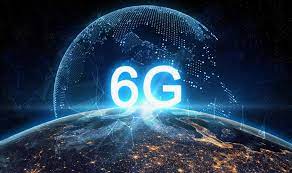Scientists from Japan have raised the bar for the speed of wireless communication to an unprecedented level. They managed to achieve a data transfer rate of 240 Gbit/s on a single digital channel, which is a revolutionary achievement.
Humanity needs insane data transfer speeds
With the development of technology, the need for faster data transfer is increasing, especially with the advent of augmented reality, “smart” homes and robotic surgeons. The 6G generation of mobile communications is ready to use the sub-terahertz frequency range and multi-level signal modulation technology to enable high-speed data transmission.
However, the challenge is to reduce interference and phase noise, which can affect the performance of multi-level signal modulation at ultra-high speeds.
It was this problem that the team from Osaka University set out to solve using the power of the VRMB laser, using sound waves to amplify light and create a precise signal. This innovative approach significantly reduced phase noise, overcoming limitations that prevented communication at 300 GHz.
Scientists have created a communication system at a frequency of 300 GHz with a signal generator in the receiver and transmitter, which includes digital signal processing (DSP, or DSP) to demodulate the signal and increase the data transfer rate.
The outstanding result of this work was a record data transfer rate of 240 Gbit/s in one channel , which became an important milestone in the development of systems based on COS around the world. With further improvements in channel compression techniques and the development of more sensitive receivers, the researchers plan to increase data rates even further, aiming to reach an impressive 1 Tbit/s in the future .
The future of mobile communication
The sixth generation of mobile communications promises a 50-fold increase in data transfer speeds compared to its predecessor, 5G, as well as a significant 10-fold reduction in signal latency. A recent achievement by Japanese scientists lays a strong foundation for the future of high-speed wireless communication, which will have implications for various technological fields.
Source: https://internetua.com/
